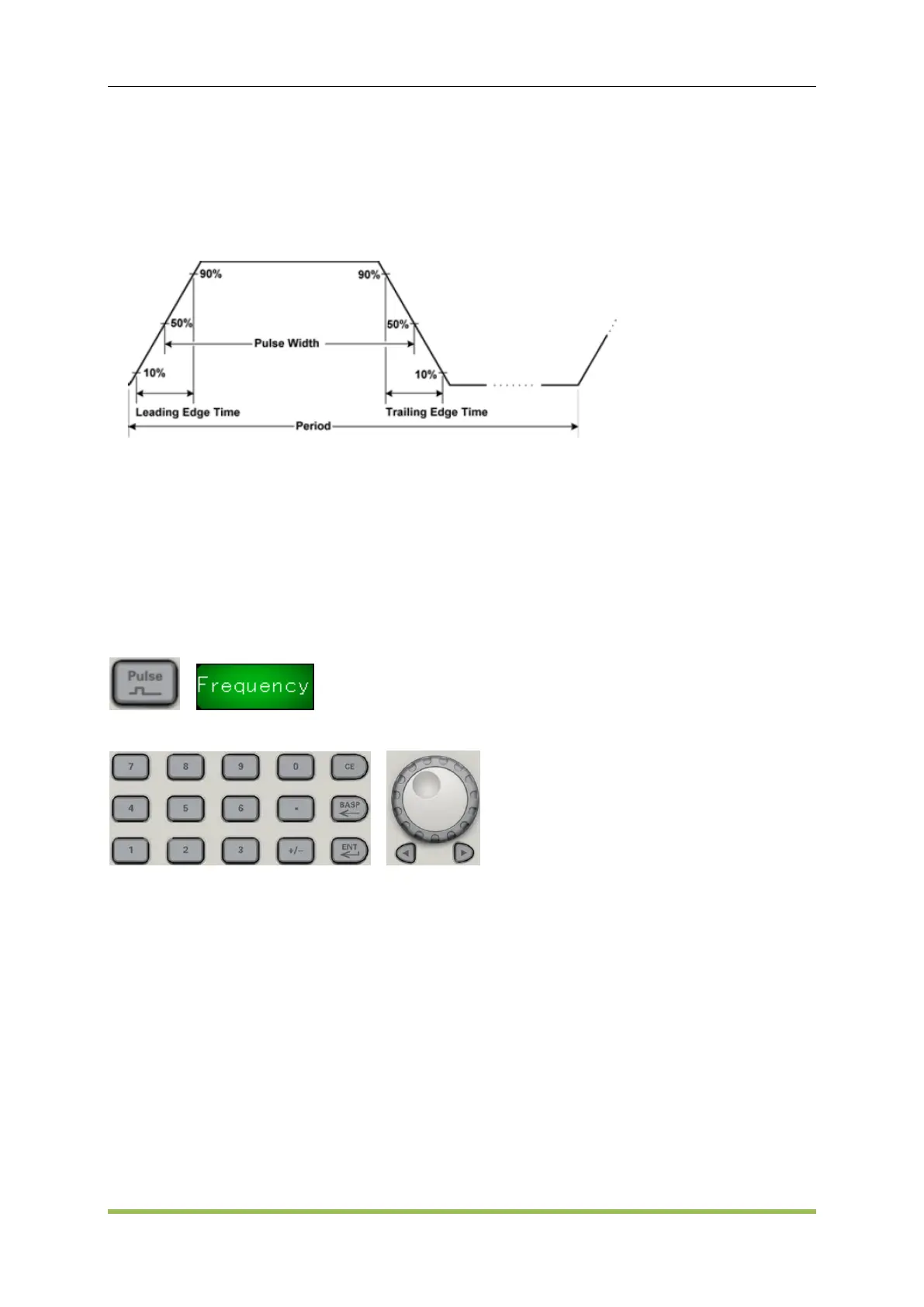Features and Function
HDG2000 Series Arbitrary Waveform Generator 30
3.2 Pulse Waveforms
As shown below, a pulse or square wave consists of a period, a pulse width, a rising edge, and a
falling edge.
1. Frequency
Frequency is the number of occurrences of a repeating event per unit time. It is also referred to as
temporal frequency, which emphasizes the contrast to spatial frequency and angular frequency.
The period is the duration of one cycle in a repeating event, so the period is the reciprocal of the
frequency.Units are Uhz, mHz, Hz, KHz, MHz.
Front Panel:
Select Pulse waveform:
Select frequency instead of period:
SCPI:
SOURce<n>:FUNCtion PULSe
SOURce<n>:FREQuency<frequency>|MINimum|MAXimum
2. Pulse Width
Pulse width is the time from the 50% threshold of a pulse's rising edge to the 50% threshold of the
next falling edge.
Pulse width: 16 ns to 1,000,000 s. The default pulse width is 500 μs.
Pulse width is limited by "minimum pulse width (16 ns)" and "pulse cycle".
Pulse width ≥ minimum pulse width
Pulse width ≤ pulse cycle-2 x minimum pulse width
